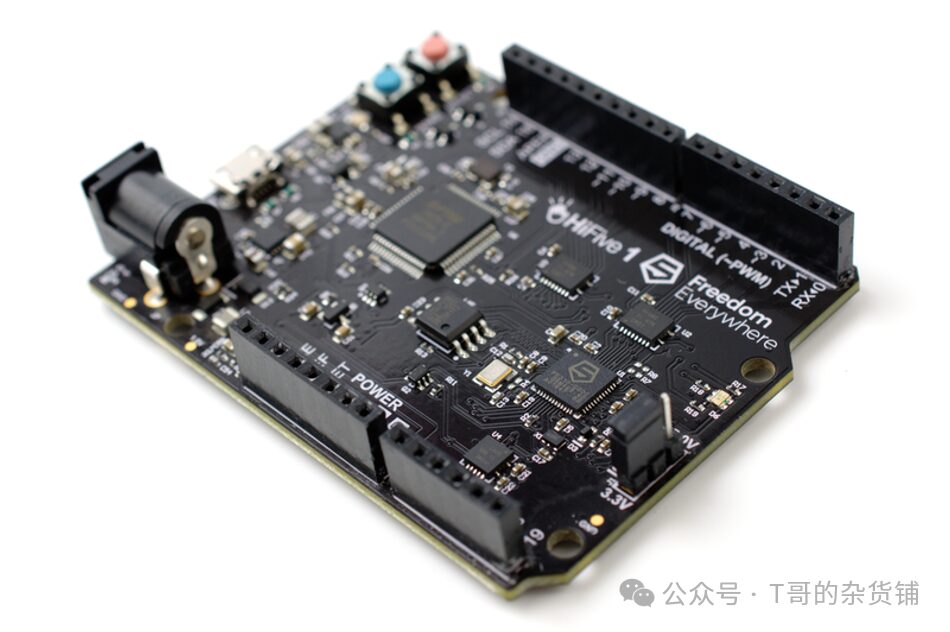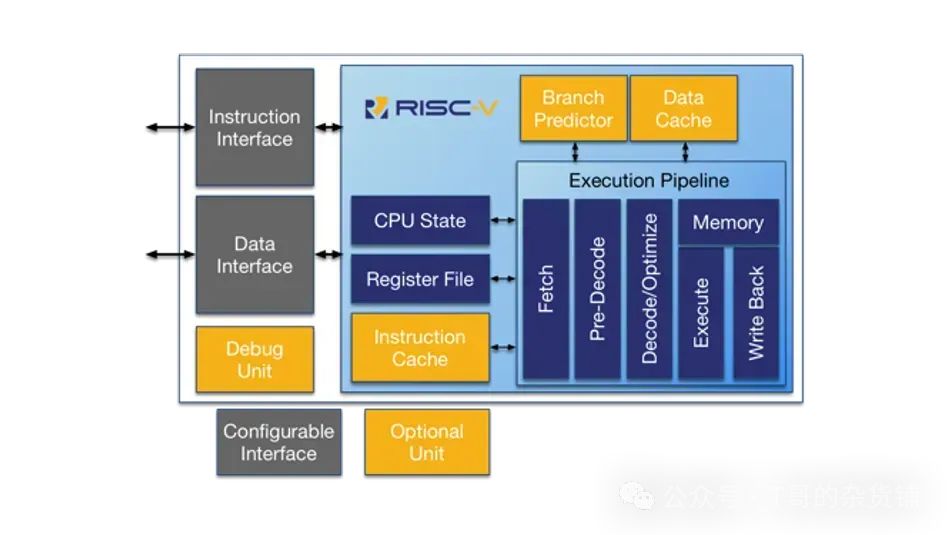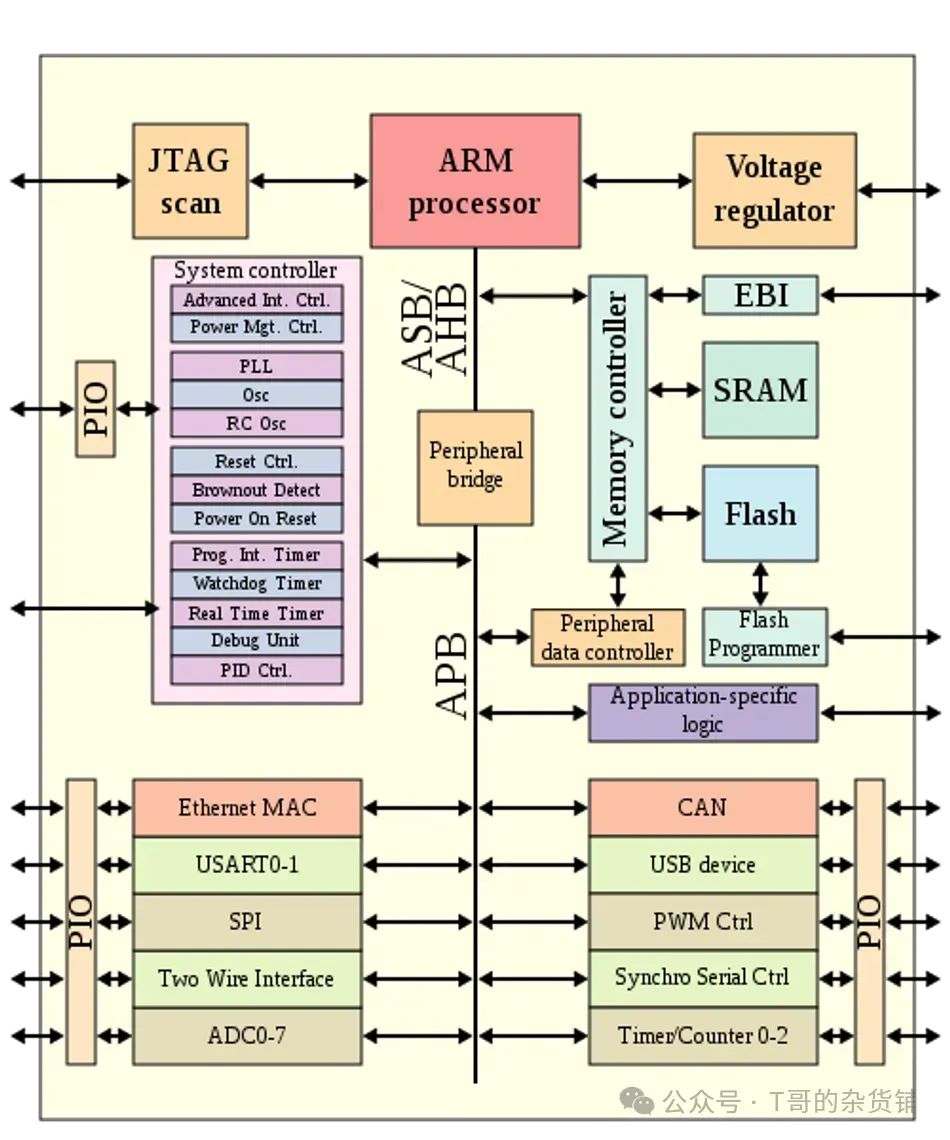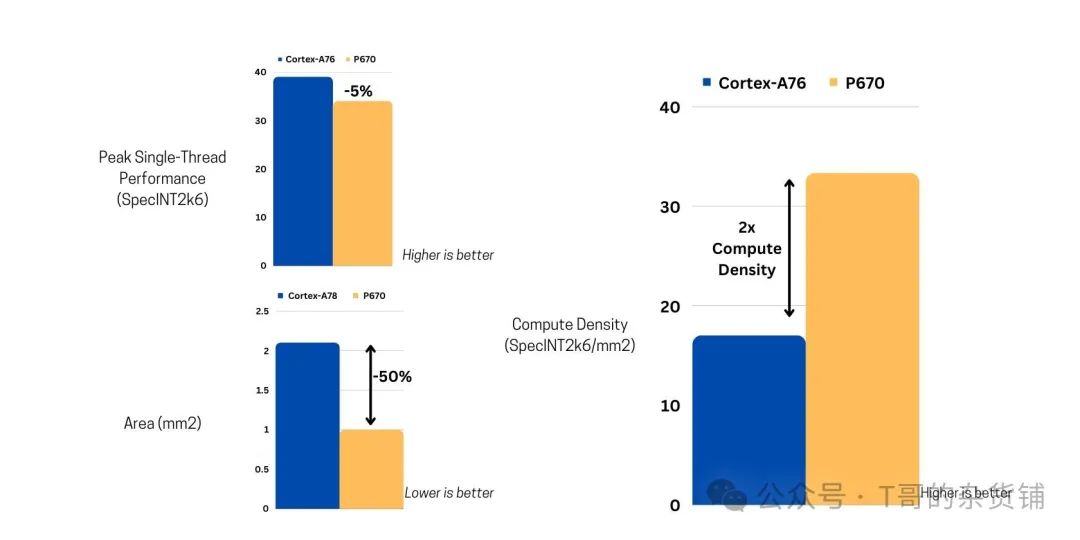In the ever-evolving world of processor architectures, the battle between RISC-V and ARM has sparked intense competition. These two giants have redefined computing capabilities with their distinct histories and ignited discussions about the openness, customization, and innovation of microprocessors.

In the ever-evolving world of processor architectures, the battle between RISC-V and ARM has sparked intense competition. These two giants have redefined computing capabilities with their distinct histories and ignited discussions about the openness, customization, and innovation of microprocessors.
Introduction
RISC-V and ARM are two processor architectures that have garnered attention in recent years. RISC-V is an open instruction set architecture (ISA) based on the principles of Reduced Instruction Set Computing (RISC), while ARM is a next-generation ISA that has gained a reputation as the dominant choice for embedded systems and mobile devices due to its long-standing presence in the market and the trust and expertise cultivated over the years.
Comparing these two architectures is crucial to understanding their strengths and weaknesses and their potential impact on the future of computing. In this article, we will delve into the history, architectural features, performance, energy efficiency, ecosystem, and licensing of RISC-V and ARM, providing a comprehensive comparison that aims to equip readers with the necessary knowledge to make informed decisions about which architecture best suits their needs and to understand the implications of the ongoing competition between these two processor architectures.
What is ISA (Instruction Set Architecture)?
At the core of every processor’s functionality is its instruction set architecture (ISA), which serves as a blueprint outlining the set of instructions the processor can understand and execute. It is the fundamental architecture between hardware and software, determining how the choice of processor ISA impacts the way software is developed, and has a lasting effect on the efficiency, compatibility, and flexibility of the core processor.
ISAs can generally be categorized into two types: open and closed. Closed ISAs (like ARM) are proprietary, strictly controlled by a company (in this case, Arm Holdings), offering established compatibility but limiting customization. In contrast, open ISAs represented by RISC-V are community-driven, providing greater flexibility for customization, fostering innovation, and adapting to specific needs.
The ongoing debate between RISC-V and ARM revolves around the different ISAs they embody, with each offering unique advantages and approaches to meet the ever-changing computing demands.
RISC-V vs. ARM: Background and History
RISC-V
 SiFive HiFive 1 processor based on RISC-V, source: web
SiFive HiFive 1 processor based on RISC-V, source: web
Over the years, significant advancements have been made in the field of computer architecture. Historically, the x86 architecture dominated, driving the development of companies like Intel. The emergence of ARM marked a new chapter in history, initially focusing on creating energy-efficient processors for mobile devices, which successfully drove the shift towards Reduced Instruction Set Computing (RISC) architectures.
While ARM has indeed achieved success in the market, it operates on a licensing model that requires fees, and customization is limited. This model has hindered smaller companies, startups, and researchers from fully participating in advanced processor development. RISC-V aims to address these limitations by providing an open-source alternative. Thus, the motivation behind RISC-V’s development stems from a desire for greater openness, customization, and innovation in the field of CPU architecture.
RISC-V originated from the Computer Science Department at the University of California, Berkeley. The project was launched in 2010, led by Professor Krste Asanović, Professor David Patterson, and their team.
The first RISC-V specification was released in 2011, and RISC-V International was established in 2015 to promote the adoption and standardization of the RISC-V ISA. The foundation has since grown, boasting over 200 members, including major tech companies like Google, NVIDIA, and Western Digital. RISC-V has rapidly gained traction across various industries, with multiple companies developing and releasing RISC-V-based processors and system-on-chip (SoC) solutions.
A significant milestone in RISC-V’s history was the release of the RISC-V Privileged Architecture specification in 2017, which defined the interface between hardware and operating systems. This specification enabled the development of more complex RISC-V processors and facilitated the porting of operating systems like Linux to the RISC-V platform.
Another important milestone was the release of the RISC-V processor SiFive Freedom U540 in 2018. This processor demonstrated the commercial viability of RISC-V and paved the way for further industry adoption of the architecture.
ARM
ARM stands for Advanced RISC Machine, originating from the British company Acorn Computers, which developed the Acorn RISC Machine architecture in the 1980s. The ARM architecture was initially designed for Acorn’s personal computers, focusing on energy efficiency and simplicity. In 1990, Acorn Computers, Apple, and VLSI Technology formed a joint venture called Advanced RISC Machines Ltd., which later became ARM Holdings.
The first ARM processor, ARM1, was launched in 1985, followed by ARM2 in 1986. These early processors were primarily used in Acorn’s Archimedes series of computers. However, ARM architecture gained widespread recognition when Apple chose the ARM610 processor for its Newton personal digital assistant (PDA) launched in 1993, marking the beginning of ARM’s dominance in the mobile and embedded systems markets.
Over the years, ARM developed multiple series of processors, each targeting specific market segments and performance requirements. Some notable ARM processor series include the Cortex-A series for high-performance applications, the Cortex-R series for real-time systems, and the Cortex-M series for microcontrollers and low-power devices.
ARM’s success can be attributed to its innovative licensing model, which allows semiconductor companies to license ARM’s IP and customize it according to their needs. This flexibility enables various companies, including industry alliances like AMD, to design and manufacture optimized applications for ARM-based CPUs and GPUs, ranging from energy-efficient mobile devices to high-performance servers. This has led to a vast ecosystem of ARM-based processors and devices, with over 180 billion ARM chips shipped to date.
The ARM architecture has become the de facto standard for mobile devices, IoT, and embedded systems, with products from major companies like Apple, Samsung, and Qualcomm relying on ARM processors.
RISC-V vs. ARM: Architectural Overview
RISC-V

RISC-V architecture load. Source: Roalogic RISC-V architecture is based on RISC principles (efficient compared to CISC), emphasizing a small, simple instruction set.
Key architectural features of RISC-V include a load-store architecture, a fixed-length 32-bit instruction format, and a small number of general-purpose registers. RISC-V supports various integer instruction set extensions, such as RV32I (32-bit), RV64I (64-bit), and RV128I (128-bit), defining the basic integer instruction set for different address space sizes.
RISC-V employs little-endian byte ordering in its memory system, meaning that the least significant byte of multi-byte data is stored at the lowest memory address.
Some unique features of the RISC-V architecture include:
-
Customization and Scalability: One of the defining features of RISC-V is its customization and scalability. The ISA is designed to be easily extensible through custom instructions and co-processors, allowing for tailored implementations that meet specific application requirements. Flexibility is achieved through custom designs, where the base ISA can be combined with optional standard extensions, such as the M extension for integer multiplication and division, the A extension for atomic operations, and the F and D extensions for single-precision and double-precision floating-point operations.
-
Compressed Instruction Set: RISC-V also supports a compressed instruction set extension called RV32C (or RV64C for 64-bit), which provides 16-bit compressed instructions that can be mixed with standard 32-bit instructions. This feature helps reduce code size and improve energy efficiency, making RISC-V particularly suitable for embedded systems and low-power applications.
-
Privilege Levels and Virtual Memory: Another important aspect of the RISC-V architecture is its support for privilege levels and virtual memory. The RISC-V Privileged Architecture specification defines different privilege levels: Machine mode (M mode), Supervisor mode (S mode), and User mode (U mode). These privilege levels provide a mechanism for isolating the operating system kernel, hypervisors, and user applications, ensuring system security and stability. RISC-V also supports a virtual memory system based on multi-level page table schemes, enabling efficient memory management and protection.
ARM

ARM architecture, source: web
Like RISC, the ARM architecture is also based on RISC principles, focusing on power efficiency and simplicity.
The main architectural features of ARM include a load-store architecture, a mix of fixed-length 32-bit and variable-length Thumb instructions, and a large number of general-purpose registers. The memory system employs bi-endian byte ordering, allowing ARM processors or machines to seamlessly handle and transfer data in both formats at the hardware level.
ARM processors are divided into multiple series, each targeting specific performance and power requirements. The most widely used ARM processor series are the Cortex-A, Cortex-R, and Cortex-M series. The Cortex-A series is designed for high-performance applications such as smartphones, tablets, and servers. These processors support advanced features like out-of-order execution, superscalar simulation, and hardware virtualization. The Cortex-R series is optimized for real-time systems, providing fast interrupt response times and deterministic behavior. These processors are typically used in automotive, industrial, and safety-critical applications. The Cortex-M series is tailored for microcontrollers and low-power devices, focusing on energy efficiency and ease of use.
-
Thumb Instruction Set: ARM processors typically implement both ARM and Thumb instruction sets, providing 16-bit compressed instructions to improve code density and performance. ARM introduced the Thumb instruction set as an optional 16-bit extension of the traditional 32-bit ARM instructions. This feature reduces code size while maintaining reasonable performance, making it suitable for memory-constrained devices (e.g., embedded systems).
-
Memory Management and Protection: ARM processors support various levels of memory management and protection, including Memory Protection Units (MPUs) for simple systems and Memory Management Units (MMUs) for more complex systems with virtual memory support. The ARMv8-A architecture, introduced in 2011, added support for 64-bit address space and introduced the AArch64 execution state, providing a new 64-bit instruction set in addition to the existing 32-bit ARM and Thumb instruction sets.
-
Optional Enhancements: In addition to the ISA, ARM processors can also include optional extensions such as NEON SIMD (Single Instruction Multiple Data) extensions for basic multimedia and signal processing tasks, as well as hardware-accelerated encryption and decryption. These extensions enable ARM processors to handle a variety of workloads while maintaining low power consumption and a smaller silicon footprint.
In summary, RISC-V’s open-source and automated approach attracts developers, researchers, and innovators seeking customizable solutions. In contrast, ARM, with its corporate backing and established ecosystem, caters to various industries, including mobile, embedded systems, and data centers.
RISC-V’s priority approach provides possibilities, while ARM’s proprietary cores deliver customized performance. Both architectures have their advantages, leading to conclusions based on specific circumstances. RISC-V appeals to those prioritizing customization and open standards, while ARM’s refined products cater to a wide range of applications across industries.
RISC-V vs. ARM: Performance
The comparison between RISC-V and ARM architectures is multifaceted, involving a range of factors that influence performance. Let’s explore some of these factors while comparing specific models, such as the P550 with the Cortex-A75 and the BeagleV with the Raspberry Pi.
-
Core Generations and Advances: SiFive’s P550 is comparable to ARM’s Cortex-A75, demonstrating that RISC-V aligns with mature ARM cores in functionality. However, ARM’s continuous development has given rise to subsequent generations of products, such as the A-76, A-77, A-78, Cortex-X1, and Cortex-X2, which may leave the P550 lagging behind ARM’s latest models. ARM’s ongoing evolution provides a performance advantage.
-
Core Performance and Efficiency: BeagleV’s U74 core aligns with ARM’s Cortex-A55 architecture, while Raspberry Pi utilizes the Cortex-A72, potentially offering advantages in performance and deployment costs. ARM’s existing cores provide a mature range of options across various performance levels.
-
Ecosystem and Industry Adoption: ARM’s extensive ecosystem dominates the industry, gaining broad software and hardware support. Companies using ARM processors can leverage established infrastructure to accelerate development and deployment.
-
Customization and Openness: RISC-V’s customization and scalable architecture offer potential customization that ARM’s infrastructure may lack. However, ARM’s solid track record, stability, and established standards provide a foundation for performance optimization.
-
Catching Up and Future Prospects: To meet ARM’s performance standards, RISC-V supporters like SiFive need to continue advancing their core designs to close the gap. ARM’s ongoing development requires RISC-V to make continuous efforts to catch up in performance and ecosystem maturity.
Let’s examine the performance comparison between products from these two competitors for better understanding. Consider the performance chart below:

ARM’s Cortex-A76 slightly outperforms SiFive’s P670 in the popular single-threaded performance. While the Cortex-A76 has an advantage in raw performance, the P670 boasts twice its compute density. Thus, considering that the physical chip size of SiFive’s P670 processor is only half that of its competitor, its peak single-threaded performance can rival that of the Cortex-A76.
The Cortex-A76 was launched in December 2020 through the Vivo X60 and X60 Pro, while the P670 was only unveiled on November 1, 2022, indicating nearly two years of research and development have passed. ARM’s latest processors now operate on the ARMv9 ISA, which has seen significant improvements over ARMv8 used in Cortex-A76. Notably, ARMv9 processors boast approximately a 30% increase in performance and a 50% improvement in energy efficiency.
In terms of pure performance, ARM processors maintain a lead. However, SiFive’s P670 has a compute density that is twice that of the Cortex-A76, giving RISC-V processors an edge in managing wearables in modular processor designs.
In the performance comparison between RISC-V and ARM, ARM’s continuous iteration, mature ecosystem, and broad range of architectural choices provide a significant performance advantage. However, RISC-V’s features and customization potential will determine whether RISC-V supporters can continue to close the performance gap and meet ARM’s established performance standards.
RISC-V vs. ARM: Efficiency
RISC-V
The energy efficiency comparison between RISC-V and ARM architectures reveals their respective strengths in managing parameters. Since both architectures adopt the RISC principle, it is essential to delve into specific data that differentiate their energy performance and the key factors that can mitigate it.
Power efficiency is a critical aspect of processor design, especially for embedded systems, IoT devices, and battery-powered applications. RISC-V’s architecture enhances simplicity and customization, contributing to improved power efficiency compared to more complex architectures. The RISC-V ISA allows for processors to be implemented with a smaller silicon footprint, reducing power consumption and enabling energy-efficient designs.
Several features of the RISC-V architecture contribute to its energy efficiency. The fixed-length 32-bit instruction format improves decoding and reduces the complexity of control logic, thereby lowering power consumption. The optional RV32C (or RV64C) compressed instruction set extension provides 16-bit compressed instructions, which can help reduce code size and enhance performance by decreasing instruction fetch and decode overhead.
Moreover, RISC-V’s custom design allows for tailored extensions and hardware accelerators that meet specific application requirements. This enables the development of processors with the necessary features while reducing power consumption by eliminating unused hardware functionalities.
Examples of energy-efficient RISC-V processors include the PULPino processor designed for IoT and wearable devices, as well as the GreenWaves GAP8 processor aimed at edge AI and machine learning applications. The GAP8 processor, featuring eight RISC-V cores, includes a dedicated hardware accelerator for USB neural networks (CNNs), achieving power efficiency of up to 200 GOPS/W (giga operations per second per watt).
ARM
Since the inception of the ARM architecture, its primary focus has been on energy efficiency, making it the preferred choice for mobile and embedded applications. ARM processors are designed to deliver performance at low power, enabling the development of energy-efficient devices across various applications.
Several features of the ARM architecture contribute to its energy efficiency. The load-store architecture and the mix of fixed-length 32-bit and variable-length Thumb instructions simplify decoding and reduce the complexity of control logic, thereby lowering power consumption. Additionally, ARM processors often incorporate power management features, such as dynamic voltage and frequency scaling (DVFS), allowing processors to adjust their operating frequency and voltage based on workload demands, further enhancing energy efficiency.
ARM’s processor series (e.g., Cortex-A, Cortex-R, and Cortex-M) are designed with different power and performance goals in mind. For example, the Cortex-M series is optimized for microcontrollers and low-power devices, with the Cortex-M4 processor operating at frequencies up to 240 MHz and achieving performance of 1.25 DMIPS/MHz, including hardware floating-point units (FPU) and DSP (digital signal processing) extensions, making it well-suited for low-power signal processing and control applications.
In the performance domain, ARM processors like the Cortex-A76 achieve excellent performance-per-watt ratios, making them ideal choices for power-sensitive devices such as smartphones and laptops. The Cortex-A76 processor operates at frequencies up to 3 GHz, achieving peak performance of 4.0 DMIPS/MHz while maintaining low power consumption.
Overall, ARM’s emphasis on power efficiency, combined with its extensive ecosystem and wide range of processors, has driven the development of energy-efficient devices across various industries and applications.
Considering the growing numbers and industry trends, we conclude that ARM’s sophisticated power management techniques and proprietary cores have a clear advantage in power efficiency. ARM’s mature ecosystem, widespread industry adoption, and solid track record amplify its advantages. While RISC-V boasts customization potential and promising prospects, its openness requires more time and resources to fully realize its energy efficiency capabilities.
RISC-V vs. ARM: Ecosystem and Support
The ecosystem and support surrounding architecture choices play a crucial role in determining their practical appeal. In the context of RISC-V and ARM, evaluating the strengths and weaknesses of their respective ecosystems and support structures is vital for organizations seeking the best solutions for their projects.
Business Models
RISC-V
-
As an open-source architecture, RISC-V attracts an impressive community of developers, some companies, and researchers, boasting over 200 members, including major tech companies like Google, NVIDIA, and Western Digital.
-
Compared to ARM, RISC-V’s ecosystem is relatively young but rapidly evolving.
-
While it may not rival ARM’s scale, its open characteristics promote collaboration, customization, and innovation.
ARM
-
On the other hand, ARM has cultivated a mature and extensive ecosystem. Its licensing model has birthed a plethora of ARM-based products, with over 180 billion ARM chips shipped to date.
-
Its ecosystem encompasses a broad range of hardware partners, software tools, and established development boards.
-
Ultimately, it provides a wealth of resources, support, and successful integrations for various applications.
Hardware and Software
RISC-V
In terms of hardware support, several semiconductor companies have developed RISC-V processors and system-on-chip (SoC) solutions, including SiFive, Andes Technology, and Microchip. These companies offer a variety of RISC-V-based products with low power consumption. Additionally, RISC-V’s open-source technology has led to the development of numerous open-source processor designs, such as PULPino and the RISC-V BOOM out-of-order superscalar processor. With companies like Amazon and other tech players exploring RISC-V’s capabilities, the landscape of CPU architecture is undergoing significant changes, with open-source hardware gaining increasing importance in previously untapped areas.
In terms of software, the RISC-V ecosystem includes support for various operating systems, including Linux, FreeBSD, and real-time operating systems (RTOS) like FreeRTOS and Zephyr.
-
RISC-V’s ecosystem is relatively new but rapidly expanding.
-
Its openness encourages experimentation and specialization.
-
Developers can customize specific solutions to meet their needs, gaining tailored solutions.
-
While the ecosystem may not be as mature as ARM’s, it offers flexibility and potential for niche applications.
ARM
Major semiconductor companies like Qualcomm, Samsung, and Apple have developed their ARM-based processors, catering to various market segments and performance requirements. These processors are used in a wide range of devices, including smartphones, tablets, IoT devices, and embedded systems. In terms of software, the ARM ecosystem supports a variety of operating systems, including Linux, Android, iOS, and Windows, as well as real-time operating systems (RTOS) like FreeRTOS and VxWorks.
-
ARM benefits from a comprehensive and mature ecosystem.
-
Its architecture supports a wide range of devices, ensuring a broad array of hardware options, software tools, and libraries.
-
Developers can choose from various development boards, compilers, and debugging tools.
Industry Applications
RISC-V
-
RISC-V is gradually gaining attention in key areas such as customization, openness, and innovation.
-
Its adoption may not be as widespread as ARM’s, but its growing presence in edge computing, desktop systems, and IoT indicates that an ecosystem tailored to specific needs is continuously evolving.
ARM
-
ARM’s extensive applications across various industries provide stable and well-supported solutions.
-
Its architecture deeply penetrates various fields, making it the preferred choice for mainstream developers.
-
The ubiquity of ARM-based devices ensures a closed market and a robust ecosystem.
Overall, while ARM’s extensive ecosystem offers stability, mature tools, and a wide range of hardware options, RISC-V’s open-source characteristics promote collaboration, customization, and innovation.
The choice between the two architectures depends on specific project requirements, with ARM catering to established industries while RISC-V provides a platform for those seeking flexible and unique solutions.
Licensing and Business Models
The world of semiconductor architectures is defined by technical capabilities; it is also influenced by the business and licensing strategies of major players. This article will delve into the licensing and business models of RISC-V and ARM, exploring how these approaches impact processor development, adoption, and customization.
RISC-V
Open Source
-
RISC-V operates under a large-scale open and royalty-free licensing model, such as the Apache License 2.0.
-
Developers are encouraged to engage in open-source, collaboration, and innovation, as they have free access to, study, modify, and distribute the architecture.
Flexible
-
RISC-V’s characteristics enable open-source organizations to customize CPU architectures to meet their specific needs.
-
Customization can be achieved through extensions and configurations, creating optimized processors for different applications.
Cost-Effective
-
A significant attraction of RISC-V is the elimination of licensing fees.
-
This can significantly reduce the costs associated with adopting and developing products based on RISC-V processors.
Ownership
-
Organizations using RISC-V can control their processor designs, reducing complete dependence on a single vendor.
-
This control is particularly beneficial for companies aiming to protect their intellectual property.
ARM
Licensing Levels
-
ARM offers various licensing models, providing access to different instruction sets and architecture capabilities based on licensing levels.
-
This tiered model allows companies to choose the access level that meets their requirements.
-
While ARM provides openness through its architecture, certain advanced features or technologies may be proprietary and require licensing agreements.
-
This blend of openness and proprietary elements allows ARM to strike a balance between customization and protecting value.
Licensing Fees
-
Depending on usage, ARM’s licensing model typically involves licensing fees.
-
These fees constitute ARM’s revenue model and may influence the overall cost structure for companies using ARM processors.
Vendor Relationships
-
Adopting ARM processors often requires establishing partnerships with ARM’s authorized vendors.
-
Companies may work closely with ARM to access advanced features, support, and customization.
In contrast, RISC-V offers open-source licensing, flexibility, cost reduction, and ownership control, while ARM provides a mix of open-source licensing, flexibility, proprietary elements, licensing costs, and collaborative ecosystems. Both choices have unique advantages, and organizations should consider these advantages when selecting processor architectures for their projects.
Case Studies and Applications
RISC-V
The streamlined and scalable architecture of RISC-V is suitable for a variety of scenarios and applications. The flexibility of the RISC-V ISA enables the development of customized processor designs tailored to specific application needs, making RISC-V applicable across various scenarios. In fact, companies like Amazon have recognized RISC-V’s potential in providing customized solutions for specific needs.
One of the primary limitations of RISC-V processors is their application in low-power embedded systems and IoT devices. The simplicity and efficient configuration of RISC-V make it an ideal choice for energy-sensitive applications, such as wearables, smart sensors, and IoT devices. Examples of RISC-V-based devices include the GreenWaves GAP8 processor (designed for energy-efficient AI and machine learning applications) and the PULPino processor, which is tailored for IoT and wearable devices.
RISC-V processors are also gaining popularity in the data center and high-performance computing (HPC) markets. The customizable features of the RISC-V ISA allow for the development of high-performance processors with custom extensions and hardware accelerators that efficiently handle complex workloads, such as AI, machine learning, and big data analytics. Examples of HPC processors based on RISC-V include the SiFive U74 and the RISC-V BOOM out-of-order superscalar processor.
Furthermore, RISC-V is being explored for safety-critical and real-time systems, such as automotive, aerospace, and industrial control applications. The open-source nature of RISC-V allows for transparent and thorough verification of processor designs, ensuring the safety and reliability of critical systems.
ARM
ARM processors are utilized across various scenarios and applications due to their heritage of efficiency, performance, and extensive ecosystem. Various ARM processor series (e.g., Cortex-A, Cortex-R, and Cortex-M) cater to different market segments and performance requirements, making ARM a versatile choice across numerous industries and markets.
One of the most prominent examples of ARM processors is in mobile devices, such as smartphones and tablets. The performance efficiency and power configurations of ARM processors make them ideal for battery-powered and workload-intensive devices. Major smartphone manufacturers, including Apple, Samsung, and Huawei, rely on ARM-based processors to power their flagship devices.
ARM processors are also widely used in embedded systems and IoT devices, such as smart sensors, home automation systems, and industrial control systems. The Cortex-M series is specifically designed for microcontrollers and low-power applications, making it particularly suitable for these examples. ARM’s IoT device examples include STMicroelectronics’ STM32 series microcontrollers and Nordic Semiconductor’s nRF52 series wireless SoCs.
In addition to mobile and IoT applications, ARM processors are extensively used in data centers and high-performance computing (HPC) markets. The ARM Neoverse platform includes Neoverse N1 and E1 processors designed for cloud infrastructure and edge computing applications, providing high performance and efficiency for data center workloads.
Moreover, ARM processors are used in safety-critical and real-time systems, such as automotive, aerospace, and industrial control applications. The Cortex-R series is optimized for real-time systems, featuring fast interrupt response times and deterministic behavior, making it well-suited for these stringent requirements.
Conclusion
In conclusion, both RISC-V and ARM processor architectures possess unique advantages that cater to different market segments and performance requirements. RISC-V’s open-source, customizable, and scalable architecture supports the development of tailored processor designs for specific applications, while the success of open-source Linux demonstrates the power of collaboration, innovation, and accessibility in nurturing industries. Similarly, RISC-V’s open design philosophy supports customization and adopts a community-driven approach. ARM’s efficiency, performance, and extensive ecosystem make it the preferred choice for mobile devices, embedded systems, and IoT devices. The ongoing competition between RISC-V and ARM will continue to shape the future of the processor industry, with both architectures offering compelling solutions for various scenarios and applications.
Frequently Asked Questions (FAQ)
What are the main differences between RISC-V and ARM architectures?
RISC-V is an open instruction set architecture (ISA) based on the principles of Reduced Instruction Set Computing (RISC), while ARM is a proprietary ISA that has become the primary choice for embedded systems and mobile devices.
Are RISC-V processors more energy-efficient than ARM processors?
Power efficiency depends on specific implementations and target applications. Both RISC-V and ARM architectures enhance power efficiency, allowing processors based on these architectures to be designed to meet various power and performance requirements.
Can RISC-V processors match ARM processors in performance?
The performance of RISC-V processors can be comparable to that of ARM processors, depending on specific implementations and target applications. RISC-V’s customizable and scalable architecture allows for a wide range of processor designs, from simple microcontrollers to high-performance application processors.
What are the primary use cases for RISC-V and ARM processors?
RISC-V processors are suitable for a variety of scenarios, including low-power embedded systems, IoT devices, data centers, desktop systems, and high-performance computing applications. ARM processors are widely utilized in mobile devices, embedded systems, IoT devices, data centers, as well as safety-critical and real-time systems.
What are the differences in licensing models between RISC-V and ARM?
RISC-V allows for an open-source licensing model, enabling semiconductor companies, researchers, and developers to create customized processor designs based on the RISC-V architecture without incurring additional costs. ARM adopts a next-generation licensing model, licensing its processor IP to semiconductor companies, which then develop and manufacture ARM-based processors and system-on-chip (SoC) solutions.
